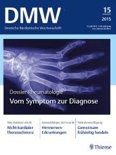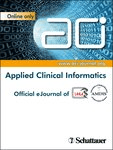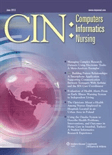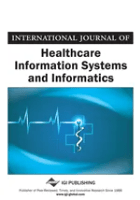
npj Digital Medicine
Scope & Guideline
Revolutionizing Healthcare through Digital Innovation
Introduction
Aims and Scopes
- Artificial Intelligence and Machine Learning in Healthcare:
The journal publishes research on the application of AI and machine learning in various healthcare settings, including diagnostics, treatment planning, and patient monitoring. This includes studies on algorithms designed to predict patient outcomes, improve diagnostic accuracy, and enhance clinical decision-making. - Digital Health Interventions:
Research on digital health interventions, such as mobile health applications and telemedicine, is a core focus. This includes evaluations of their effectiveness in managing chronic diseases, enhancing patient engagement, and improving healthcare delivery. - Health Equity and Access:
The journal emphasizes research that addresses health disparities and promotes equity in healthcare access through digital solutions. Studies often explore how technology can be leveraged to reach underserved populations and improve health outcomes. - Data Privacy and Ethics in Digital Health:
The ethical implications of using digital health technologies and AI in medicine are a significant theme. The journal features articles that discuss data privacy, security, and the ethical considerations of implementing AI in clinical practice. - Wearable Technologies and Remote Monitoring:
Research on wearable devices and their applications in monitoring health metrics and managing diseases is prevalent. This includes studies on how these technologies can provide real-time data for better health management. - Regulatory and Policy Aspects of Digital Health:
The journal also covers the regulatory landscape surrounding digital health technologies, including discussions on policy implications, compliance, and the impact of regulations on innovation in healthcare.
Trending and Emerging
- Integration of AI in Clinical Practice:
There is a significant increase in research focused on integrating AI into clinical workflows, including decision support systems and diagnostic tools. This trend underscores the growing reliance on AI to enhance clinical decision-making. - Remote Patient Monitoring and Telehealth:
The COVID-19 pandemic has accelerated the adoption of telehealth and remote monitoring solutions. Research in this area is trending, with a focus on the effectiveness of these interventions in managing chronic diseases and improving patient outcomes. - Digital Biomarkers and Precision Medicine:
Emerging studies are focusing on the development of digital biomarkers derived from wearable devices and mobile health applications. This trend aims to enhance precision medicine approaches tailored to individual patient needs. - Generative AI and Natural Language Processing:
Research exploring the use of generative AI and natural language processing (NLP) for medical applications is gaining momentum. This includes studies on AI-driven patient communication, documentation, and information extraction. - Health Equity and Social Determinants of Health:
There is a growing emphasis on research that addresses health equity and the social determinants of health, particularly how digital health technologies can be leveraged to improve access and outcomes for marginalized populations. - Ethics and Policy Frameworks for Digital Health:
Emerging themes in ethical considerations and policy frameworks surrounding the use of digital health technologies are increasingly prominent, reflecting the need for responsible innovation in the field.
Declining or Waning
- Traditional Clinical Trials:
There has been a noticeable decline in studies that focus solely on traditional clinical trial methodologies without incorporating digital health innovations. As digital therapeutics and remote monitoring gain traction, traditional trial designs are being overshadowed. - Basic Biomedical Research:
Research that focuses on basic biomedical science without a direct application to digital health or technology integration is less frequently published. The journal is increasingly prioritizing studies that connect technology with clinical applications. - Generalized Health Technology Assessments:
There is a waning interest in broad assessments of health technologies that do not specifically address digital or AI-enabled solutions. The journal is now more focused on specific applications of technology rather than generalized evaluations. - Manual Data Collection Techniques:
Studies relying on traditional, manual data collection methods are becoming less common as the field shifts towards automated, data-driven approaches that leverage digital tools and AI.
Similar Journals

DEUTSCHE MEDIZINISCHE WOCHENSCHRIFT
Fostering collaboration for a healthier tomorrow.DEUTSCHE MEDIZINISCHE WOCHENSCHRIFT, published by GEORG THIEME VERLAG KG, is a prominent journal in the field of general medicine, with a storied history dating back to 1875. With an ISSN of 0012-0472 and an E-ISSN of 1439-4413, this journal serves as a vital resource for medical professionals and researchers seeking to stay informed on the latest developments and research in medicine. As of 2023, it holds a Q4 ranking in the category of Medicine (Miscellaneous) and is positioned within the 40th percentile among its peers in general medicine, highlighting its relevance within the academic community. While not an open-access journal, DEUTSCHE MEDIZINISCHE WOCHENSCHRIFT offers readers access to a diverse range of articles that encompass clinical studies, systematic reviews, and opinion pieces geared towards enhancing medical practice and research. Located in Stuttgart, Germany, the journal continues to contribute to the advancement of medical knowledge and serves as an indispensable tool for scholars and practitioners alike.

JOURNAL OF MEDICAL INTERNET RESEARCH
Empowering Research at the Intersection of Medicine and the InternetJOURNAL OF MEDICAL INTERNET RESEARCH, published by JMIR PUBLICATIONS, INC, stands as a pivotal resource in the field of Health Informatics, with an esteemed ranking of #7 out of 138 in the Scopus database, placing it in the top 95th percentile. Since its inception in 1999, this Open Access journal has been committed to disseminating high-quality, peer-reviewed research that explores the intersection of healthcare and internet technologies. With its headquarters in Toronto, Canada, the journal encompasses a broad range of topics, including eHealth, telemedicine, and mobile health innovations. The impact factor and its Q1 quartile ranking highlight the journal's significant influence and prevalence in advancing the understanding of digital health landscapes. Researchers, professionals, and students alike benefit from its valuable insights, making the JOURNAL OF MEDICAL INTERNET RESEARCH an essential tool for fostering informed practices and policy-making in the rapidly evolving domain of health informatics.

TECHNOLOGY AND HEALTH CARE
Exploring the Intersection of Care and TechnologyTECHNOLOGY AND HEALTH CARE, published by IOS PRESS, stands as a prominent interdisciplinary journal dedicated to the integration of technology within the healthcare sector. With an ISSN of 0928-7329 and an E-ISSN of 1878-7401, this journal has been a vital resource since its inception in 1993, providing insights and advancements in various categories including bioengineering, biomedical engineering, health informatics, and more. Though it currently holds a Q4 classification in several fields and Q3 in others, it actively contributes to the dialogue surrounding innovative methodologies and practices that enhance healthcare delivery. Researchers, professionals, and students will find the journal invaluable for its diverse range of studies that explore the convergence of technology and health. Its commitment to fostering impactful research continues to reinforce its relevance in the evolving landscape of healthcare technology.

Applied Clinical Informatics
Advancing patient outcomes with cutting-edge informatics solutions.Applied Clinical Informatics is a leading journal dedicated to the expanding field of health informatics and its applications within clinical settings. Published by GEORG THIEME VERLAG KG in Germany, this journal serves as a pivotal platform for researchers and professionals engaged in the integration of technology and healthcare, aiming to improve patient outcomes through innovative informatics solutions. With a solid Q2 ranking in multiple disciplines including Computer Science Applications, Health Informatics, and Health Information Management, it reflects its prominent position in the academic landscape. The journal provides accessible content while fostering dialogue on key issues and advancements in clinical informatics. Covering a wide array of topics from data management to e-health applications, Applied Clinical Informatics is essential reading for those looking to stay attuned to the latest research and developments from 2009 to 2024, enriching the knowledge base of students, professionals, and researchers worldwide.

CIN-COMPUTERS INFORMATICS NURSING
Transforming Care Delivery with Informatics InsightsCIN-COMPUTERS INFORMATICS NURSING is a distinguished journal that publishes cutting-edge research at the intersection of nursing and information technology. Published by Lippincott Williams & Wilkins, the journal has been a pivotal platform since 2002, catering to the needs of health informatics professionals and nursing researchers. With an impressive impact factor and ranked within Q2 in Nursing (miscellaneous) and other relevant categories, it serves as a key resource for advancing knowledge and best practices in the field. The journal's inclusion in important databases ensures broad visibility and access to the latest findings that influence healthcare delivery. CIN-COMPUTERS INFORMATICS NURSING welcomes a diverse range of articles, including empirical studies, reviews, and innovative methodology approaches, making it an invaluable asset for clinicians, educators, and scholars dedicated to enhancing nursing informatics and improving patient outcomes.

International Journal of Healthcare Information Systems and Informatics
Shaping the evolution of healthcare through data and technology.International Journal of Healthcare Information Systems and Informatics is a prestigious academic journal published by IGI Global, focusing on the vital intersection of healthcare and information technology. With an ISSN of 1555-3396 and E-ISSN of 1555-340X, this journal serves as a pivotal platform for researchers, professionals, and students to explore innovative solutions and advancements in healthcare informatics. As of 2023, it holds a commendable Q3 ranking in categories such as Information Systems and Medicine, highlighting its significant contribution to the academic community. Covering a wide range of topics from healthcare data management to the implementation of information systems in clinical settings, the journal aims to foster critical discussions and disseminate impactful research. With a publication history spanning from 2006 to 2024, it continues to play a crucial role in guiding the future of healthcare information systems. Readers can access this journal through traditional subscription methods, ensuring that leading-edge research reaches those most invested in the evolution of healthcare informatics.

Intelligent Medicine
Bridging technology and medicine for a healthier tomorrow.Intelligent Medicine, published by Elsevier, is a leading open-access journal dedicated to advancing the fields of Artificial Intelligence, Biomedical Engineering, Health Informatics, and related areas within Medicine. Since its inception in 2021, it has quickly established itself among the top tier of academic publications, holding a commendable Q2 ranking in several categories, including a rank of #51 in Health Informatics and #104 in Medicine (Miscellaneous) as of 2023. The journal aims to disseminate innovative research that harnesses AI technologies to improve healthcare outcomes, bridging the gap between cutting-edge technology and medical practice. With its open-access model, Intelligent Medicine ensures broad dissemination of research findings, facilitating collaboration and knowledge sharing among researchers, practitioners, and students globally. Located in Amsterdam, Netherlands, this journal plays a pivotal role in shaping the future of intelligent healthcare solutions, inviting submissions that push the boundaries of conventional medicine through creative and impactful research.

Cardiovascular Digital Health Journal
Innovating Heart Health: Where Digital Meets MedicineCardiovascular Digital Health Journal is a premier publication dedicated to advancing the field of digital health technologies in cardiovascular care. Published by Elsevier, this journal is a vital resource for researchers, professionals, and students engaged in the exciting intersection of cardiovascular medicine and innovative digital solutions. With an ISSN of 2666-6936, the journal spans from 2020 to 2024 and is categorized in Q2 across prominent fields including Biomedical Engineering, Cardiology and Cardiovascular Medicine, and Critical Care and Intensive Care Medicine, reflecting its influential position in the academic community. Although currently not an open-access journal, it offers access through institutional subscriptions, enabling a broad reach for cutting-edge research. The Cardiovascular Digital Health Journal not only strives to disseminate high-quality studies but also aims to foster collaborative insights that propel the integration of digital health in cardiovascular practice, addressing the critical needs of health systems worldwide.

International Journal of E-Health and Medical Communications
Connecting the dots between technology and patient care.Welcome to the International Journal of E-Health and Medical Communications, a pivotal publication designed to bridge the gap between health informatics and computer science applications. Published by IGI Global, this journal serves as a platform for innovative research and insights into e-health technologies, health communication strategies, and the evolving role of digital tools in enhancing healthcare delivery and management. With an ISSN of 1947-315X and E-ISSN 1947-3168, it caters to an audience keen on advancing the intersection of technology and health, as evidenced by its respectable standings in Scopus rankings—positioned in the 64th percentile in Health Informatics and 63rd in Computer Science Applications. Over its publication history from 2010 to 2024, the journal has consistently contributed to significant discussions and advancements within these fields, highlighted by its Q3 quartile ranking in 2023. Join a community of researchers, professionals, and students dedicated to the ongoing exploration of e-health, as we collectively navigate the complex landscape of healthcare innovation.

Frontiers in Digital Health
Connecting Disciplines for a Healthier TomorrowFrontiers in Digital Health is an innovative peer-reviewed journal published by FRONTIERS MEDIA SA, focusing on the intersection of digital technology and healthcare. As an Open Access journal since 2020, it aims to democratize knowledge by making cutting-edge research freely available to the global community. The journal covers a wide array of topics within the realms of Biomedical Engineering, Health Informatics, and a variety of Computer Science Applications, ensuring interdisciplinary collaboration and advancements. Recognized for its excellence, it holds prestigious rankings in multiple categories, including Q1 in Biomedical Engineering and Q2 in several related fields according to the 2023 metrics. Set in the heart of Switzerland, the journal fosters a comprehensive approach to enhancing digital health technologies, making it an essential resource for researchers, professionals, and students dedicated to improving health outcomes through innovation.